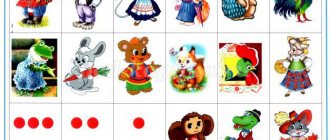Speech is one of the indicators of child development. As children grow up, they expand their vocabulary and actively explore the world around them. However, many babies, as they grow up, face problems when reproducing certain sounds. This is the norm in the first years of life. But if a child pronounces sounds incorrectly at an older age, then we can talk about a violation of sound pronunciation.
Violation of sound pronunciation is the most common speech defect that speech therapists constantly encounter. Pathology comes in various types:
- dyslalia with normal hearing and a healthy central nervous system;
- dyslalia in children with different degrees of hearing loss;
- dysarthria with normal hearing, but with organic lesions of the central nervous system.
Problems with sound production most often occur in preschool age. At this time, it is necessary to correct the speech defect. However, many parents do not react to the fact that the child cannot pronounce a large number of sounds. Some consider it unimportant, while others are confident that everything will go away on its own.
Norms for the development of sound pronunciation
If a child has difficulty pronouncing sounds, this is not always a cause for concern. In some cases, this is an age-related developmental norm. At each stage of growing up, a child acquires certain speech skills.
- from 1 month – children begin to unconsciously pronounce the vowel sounds “Y”, “U”, “A”, “E”. In infancy, the child mostly lies down, and the tongue can be thrown back. Therefore, sometimes the baby manages to pronounce several back-lingual sounds, for example, “G” or “X”;
- from 4 to 5 months - children try to practice reproducing individual sounds;
- from 5 to 10 months – the baby moves from individual sounds to syllables. Usually these are "Ba", "Ta", "Pa", Da" and "Ma". The number of syllables gradually increases. If up to 4 months the baby “booms,” then from 5 to 10 months he “babbles”;
- from 10 to 18 months - the child tries to pronounce his first words. By this point, children are able to consciously reproduce most of the vowel sounds - “A”, “Y”, “O”, “E”, “I” and “U”, as well as some consonant letters - “M”, “T”, “ P", "D", "B", "N", "K", "V", "G", "Y", "F", "X";
- from 1.5 to 3 years - the child is able to pronounce several whistling sounds - “C”, “S” and “Z”. If he cannot cope with this task, then you should pay attention to the situation. Note that from 1.5 to 2 years the baby often pronounces sounds incorrectly. For example, instead of “З” it is used “Дь” (“tooth”/“doubt”/“oak”). By the age of three, children often experience a softening of vowel and consonant sounds (“tumba - “tyumbya”, “baby - “crumpled”). As a rule, this goes away by the age of four;
- from 3 to 4 years. Children proceed to play hissing sounds - “Shch”, “Sh”, “Ch” and “Zh”. Until this moment, as a rule, they replace them with similar ones - “Sh” with “S” (“school” - “skola”), “Ch” with “C” or “T” (“chub” - “tsyub” / “tube”), etc. If a child up to five years old does not pronounce hissing sounds well, then this is the norm. The baby gradually learns, so these letters may not be pronounced correctly in all words. There is a partial replacement of sounds, for example, “the cat caught the mouse,” etc. It is important to regularly work with the child and correct him. Then he will quickly master the new sound;
- from 4 to 5 years. The appearance of sonorous sounds is observed. But up to 4.5 years, for example, the hard “L” can be replaced with the soft “L”. By the age of five, the child can already pronounce “R” and “L” well. This is the most complex group of sounds. Therefore, there is no need to demand from a child that at the age of three he clearly says “fish”, “crayfish” and other “growling” words. Moreover, if you put a lot of pressure on your baby, he may begin to pronounce “R” in the manner of the French language. This deviation will be more difficult to correct at an older age. Remember that it is better to turn on the sound when it is not there yet than to re-teach the child.
Naturally, all children are individual. Therefore, minor deviations from the norm are allowed. If parents constantly talk and practice with their child, then such a child pronounces sounds correctly by the age of five. However, more and more often preschool children have problems with sound pronunciation. Please note that if a child pronounces sounds incorrectly while at school, he may have problems learning to read and write.
Let's play games...
Several exercises and games can be recommended to examine and develop a child’s auditory attention and control.
1) Recognize an object by sound. Take 3-5 sounding toys (rattle, flute, drum, accordion). Introduce your child to the sound of each of them. After that, ask him to turn around and guess which one you just played.
2) Now ask your child to guess what object you tapped with a stick (glass, saucer, cardboard box, plastic toy).
3) Who is this? An adult imitates the cry of animals or birds, the buzzing of insects. The child must guess who he imitated.
4) Are you attentive? On your instructions, the child remembers a sound that is first clearly audible in speech (R, U) or one that he pronounces correctly. Then you say a series of words that contain that sound and those that don't. For example, Fish, Cancer, head, table, trough. The child should raise his hand when he hears a word with the sound R.
5) A variation of the previous game will be determining the place of a given sound in a word (at the beginning, middle, end).
6) A more complex form is a game with pictures. Among them, the child is asked to select only those that depict an object whose name contains a given sound.
7) When the child learns quite freely to identify sounds in words that he pronounces correctly, instruct him to recognize one of the sounds he distorts. Do exercise 4), 5), 6). If he completes the task, make this sound. Ask them to repeat it after you.
If a child finds it difficult to complete the exercises, do not rush him, do not get upset and practice on the previous material, which can be varied: change toys, pictures, take on new words.
 An even more complex form of sound analysis is the comparison of two sounds that are similar in sound or articulation (position of the speech organs): S-3, P-B, Sh-Zh, Ch-T, Ts-S, etc. Exercises 4 are also acceptable here ), 5), 6); only in this case the child simultaneously selects two sounds from the total mass and distinguishes them from each other.
An even more complex form of sound analysis is the comparison of two sounds that are similar in sound or articulation (position of the speech organs): S-3, P-B, Sh-Zh, Ch-T, Ts-S, etc. Exercises 4 are also acceptable here ), 5), 6); only in this case the child simultaneously selects two sounds from the total mass and distinguishes them from each other.
9) A variation of the previous exercise is to isolate and distinguish the correct sound from the one with which it is replaced (for example, R-L, S-Sh, Ts-S).
10) Say the words yourself. This is one of the final forms of work. On instructions from an adult, the child independently names words with a certain sound. Here you can vary: the sound can be at the beginning of the word, in the middle and at the end.
How do sound pronunciation disorders manifest themselves?
If the baby pronounces sounds incorrectly, this may indicate dyslalia or dysarthria. These deviations have some differences. With dyslalia, the pronunciation of sounds of different groups is impaired - sonorant, hissing, front-lingual, and so on. Speech defects can manifest themselves in different ways:
- absence of sounds (omission of complex letters in the words “yoke” - “yoke”);
- replacing sounds (together with “R” the child pronounces “L”, for example “fish” - “lyba”);
- distortion of sounds (French “R”, side “W”, etc.).
Dyslalia often develops against the background of hearing loss. Children with hearing loss have difficulty distinguishing between whistling and hissing, dull and voiced sounds.
With dysarthria, the child pronounces consonants and vowels incorrectly. Improper breathing and decreased emotional expressiveness of speech are also observed. It is worth noting that disturbances in the pronunciation of sounds associated with dysarthria are more stable. Therefore, correction may require more time and effort.
Causes of sound pronunciation problems
If the baby pronounces a number of sounds incorrectly and indistinctly, then it is worth being examined by a neurologist and speech therapist. The causes of problems with sound pronunciation may be different. However, it is necessary to identify the problem in a timely manner in order to select an effective correction program.
Dyslalia can occur due to:
- pathologies of the development of the speech apparatus (malocclusion, short frenulum, etc.);
- presence of two languages in the family;
- incorrect approach to the development of a child’s speech (communication in a “lisping” language);
- hearing loss;
- problems with sound pronunciation in one of the parents (children tend to tremble).
Dysarthria develops with damage to the central nervous system, which can be caused by:
- problems during intrauterine development;
- injuries during childbirth (umbilical cord entanglement, etc.);
- cerebral palsy;
- Rhesus conflict;
- serious infections that the child suffers;
- problems with blood circulation in the brain;
- brain injuries.
Even serious problems with the pronunciation of sounds can be corrected. However, many parents have one question. If sound pronunciation can be corrected, then why do many adults speak incorrectly? This is due to two factors. Some parents believe that there is nothing wrong with the incorrect pronunciation of certain sounds. There are also cases when they begin to provide assistance without identifying the cause of the speech defect. Naturally, correction of dyslalia with dysarthria will not have an effect.
What variants of the wrong sound need to be caught?
There can be four of them:
The child does not make any sound at all. He says Apka instead of a hat or kAAndash instead of a pencil.
Replaces one sound with another. Then he pronounces Sapka instead of hat or KaLandash instead of pencil.
Distorts the sound. In this case, he replaces the desired sound with another that does not exist in the Russian language. For example, pronounces the sound C with the tip of the tongue protruding between the teeth or pronounces P gutturally, etc.
Uses sound inconsistently. The child pronounces it correctly in some words, but not in others (ocucumber, but Syplyata, YaiSo) or can pronounce the sound in isolation, but does not use it in words or in independent speech.
Your task is to trace as carefully as possible why the child’s sound is incorrect, what is the mechanism of its disturbance. Experience shows that most often the cause is a violation of the movements of the speech organs (tongue, lips) and auditory perception. That is why it is imperative to find out whether the child’s tongue and lips are mobile enough. To do this, do the following exercises with him:
1. Open your mouth. Without closing it, stick out the tip of your tongue and hide it. Repeat several times.
2. The same thing, but now move the tip of the tongue alternately from one corner of the mouth to another (the “Pendulum” game).
3. The same, but the tip of the tongue makes a circular movement along the lower, upper, lower lip again and in the opposite direction (without touching the opposite lip).
If a child finds it difficult to do these exercises on his own, you need to help him by holding the tip of his tongue with a clean bandage and moving it in the right direction. Subsequently, the child will help himself until the need for this help disappears.
4. Teach your child to use a “spatula” tongue (wide tongue, relaxed). Lightly slap the handle of a teaspoon along the middle of your tongue if it feels tense.
5. Then teach the child to stick out his tense, pointed tongue (“needle”) strongly. It is necessary that the child can make the tongue either a “spatula” or a “needle”.
6. From the “spatula” position of the tongue, it is easy to make the tongue a “tube” if at this moment you lightly squeeze your fingers on both sides of the child’s cheeks and ask him to inhale through his mouth.
7. From the same “spatula” position of the tongue, you can make the tongue “cup” if you slightly bend its tip upward.
8. For the lips, we can recommend exercises in silent pronunciation of the sounds I-U-I-U. Or: show your teeth wide and hide them.
Exercises for the tongue and lips should be done many times, preferably in front of a mirror, so that the child can control his movements. Their goal is to activate the muscles of the speech organs, teach the child to control them, and hold them in a given position. Without this, he will not be able to overcome the incorrect pronunciation of sounds.
Even more important for the formation of good, clear speech is the child’s auditory attention, his perception of the sounds of speech of surrounding people and auditory control of his own speech. To appreciate the significance of the speech of others for a child, let us recall the savage experiment of Padishah Akbar, famous in history. Having decided to test the court sages, who claimed that every child would sooner or later speak the language of his ancestors, even if no one taught him this, Akbar isolated several young children of different nationalities from the world for seven years. A mute man served the children. They had never heard a human voice. When the padishah, in the presence of his sages, finally freed the little prisoners, he was greeted by howls and inarticulate screams. Thus were the wisest of the wise put to shame...
It has been proven that a child’s speech is formed on the basis of his perception of the speech of the people around him, which he initially learns to recognize, distinguish and then imitates. That is why, in order to overcome pronunciation deficiencies, it is necessary that the child be able to recognize and identify speech sounds.
Corrective work
If a child pronounces sounds incorrectly, you should contact a speech therapist. He will examine the baby, determine the cause of the disorder and prescribe an effective assistance program. It is selected individually in each case. In order for a child to speak normally, it is necessary to eliminate the cause of the violation of pronunciation of sounds. In some cases, surgical correction of the speech apparatus is required. Then the speech therapist refers the child to the dentist. After this, you can begin to produce the correct speech.
Many parents worry when their child pronounces many sounds incorrectly. In this case, to correct the disorder, it is better to contact the NEAPL Speech Therapy and Psychology Center. Experienced specialists use an integrated approach to correcting speech defects using speech therapy massage, play sessions, logorhythmics, and so on. A team of professionals works on the correct pronunciation of sounds, which allows you to achieve a lasting effect.
Tips for parents
Quite often, the child pronounces the correct sounds during classes with speech therapists and teachers. But, returning home, he loses control of himself. This behavior is allowed in the first steps of correction, since the child learns to control himself gradually. However, parents should be persistent. They can help form auditory attention faster.
Many adults communicate little with children, limiting themselves to only short remarks, for example, “go eat,” “wash your hands,” and so on. To form the correct sound pronunciation, you need to talk more with the child. Voice any situations, accompanying them with visual contact. For correct pronunciation of sounds, the baby must see the articulation of the parents. Therefore, try to speak clearly, clearly and with intonation. When communicating with your child, avoid complex sentences. Too much information will not allow him to focus on sounds. At the same time, children often acquire the bad habit of listening to adults mechanically. This may interfere with correction, since the child will transfer this behavior to the teacher’s office.
Read more books to your baby. This will give him the opportunity not only to remember the correct sounds, but will also significantly expand his horizons. Fairy tales, poems, ditties and stories can be repeated several times. Children perceive better information that is already familiar to them. To learn how to reproduce sounds correctly, you can also role-play scenes and use various objects and gestures. Children like this form of activity and they do not resist. Watch how your baby pronounces sounds, whether he pronounces them clearly or tries to swallow them. Don't rush him while reading poetry. Let him say every sound.
The development of fine motor skills also has a good effect on the formation of correct speech. You will be surprised that modeling from plasticine or drawing will help your baby pronounce sounds well. This will also have a positive impact on the development of written speech in the future. The child must be able to fasten buttons, tie shoelaces, knots and bows. This also affects the correct pronunciation of sounds due to the development of hand-eye coordination.
Socio-cultural conditions
According to UNESCO, 94% of modern preschool children spend up to 34 hours a week in front of the TV or with gadgets, i.e. almost 5 hours a day! This significantly exceeds the time they devote to communicating with adults or with each other. The consequence of this is a delay in speech development, incorrect pronunciation, and a poor, primitive vocabulary.
It would seem that a child, sitting in front of the TV, constantly hears speech, which is often colorful and expressive. But the whole problem is that it does not have the desired effect on the baby, since he is not involved in practical activity, and the speech flowing from the screen plays only the role of a sound background. Only communication with loved ones, emotions, interaction, and involvement in conversation give the child the necessary motivation.
These factors have led to the fact that in recent years the number of children with speech disorders has increased more than 6 times, and this figure continues to grow. Nowadays, a rare preschool group manages without the specialized help of a speech therapist, and this picture is observed not only in our country, but throughout the world, and therefore this problem is becoming global.








